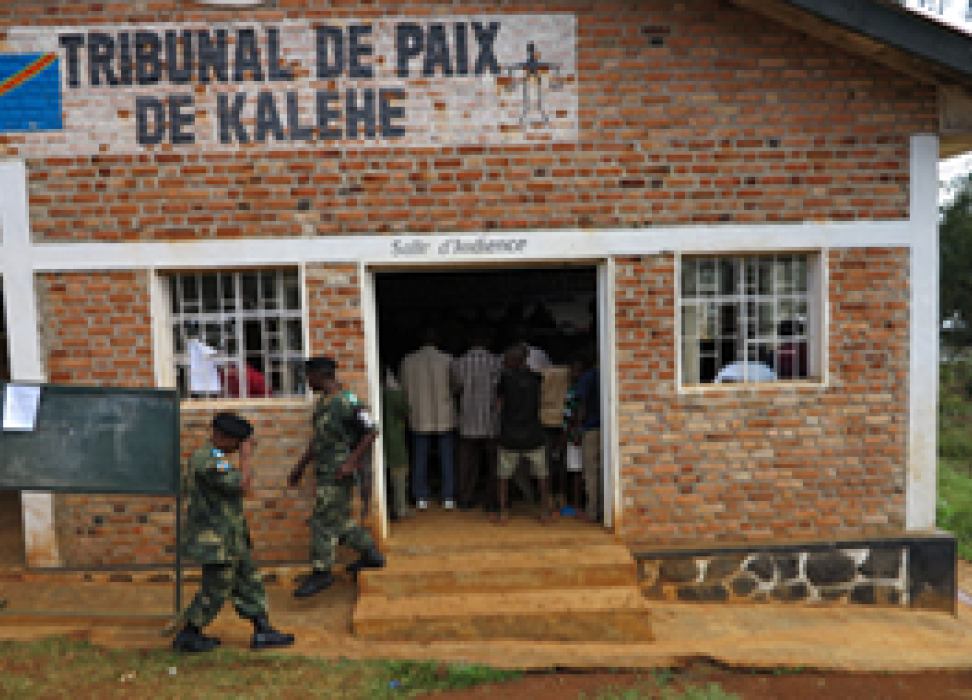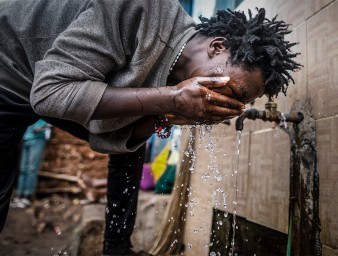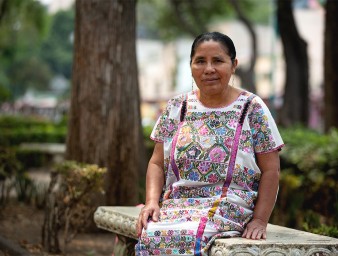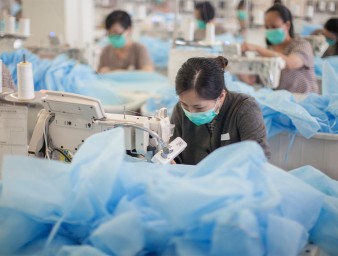The Long Road to Ending Impunity
10 October 2014

"Peace Tribunal of Kalehe." Thus reads the sign painted on a small brick building in the village of Kalehe, South Kivu, Democratic Republic of Congo (DRC). A sandy, unpaved road, a church, a small hospital built in the fifties by an Italian nun, all surround the 'peace tribunal' on the shores of Lake Kivu, one of the few visible signs of the Congolese State's presence in the village. The building represents the culmination of a seven year journey.
Since 11 August 2014, this tribunal has represented much more than a simple court house in a remote area: it has become the epicenter of the fight against impunity in that central African country, which has been ravaged by years of violence.
This seven year-long journey has brought to the stand Lieutenant-Colonel Bedi Mobuli Engangela, better known as ‘Colonel 106’, a name that still terrorizes many in the South Kivu province.
To fight impunity for serious crimes in the DRC, in 2007 the UN Joint Human Rights Office (UNJHRO) gave to the UN Security Council a list of five senior officers of the Congolese armed forces (FARDC) suspected of serious crimes, including sexual violence, and asked that they be brought to justice.
The Security Council sent the list to President Joseph Kabila and his Prime Minister. Proceedings against Engangela, who had already been detained since 2007 in Kinshasa, began when he was officially issued with an arrest warrant on 24 September 2011. Since then, the UNJHRO's Protection Unit, its Transitional Justice and Fight against Impunity Unit and its field office in Bukavu, have been providing assistance to the military authorities on this case, in collaboration with other local and international actors such as the UN Development Programme and the NGO Avocats Sans Frontières.
The investigations carried out by the UNJHRO Bukavu field office in the village of Bunyakiri, where Engangela established his headquarters during his command, enabled the Prosecution to call more than 200 victims and eyewitnesses of the alleged crimes against humanity committed by Engangela between 2005 and 2006 to testify at the trial.
The challenge for the Protection Unit of the UNJHRO was to set up a mechanism that would enable victims and witnesses to access justice without fear of retaliation. Without adequate protection measures, the civilian population, still vulnerable and often exposed to violence, may feel that the price to pay for testifying against a former member of an illegal armed group and still-serving member of the FARDC is too high.
The difficulty that the Unit faces is that the Congolese judicial system has no specific program that could guarantee the safety of victims or witnesses who testify. In the absence of such legal framework, the Protection Unit must negotiate with the authorities adequate protection measures on a case by case basis. The trial taking place in Kalehe against Engangela has become emblematic not only in the fight against impunity, but in the protection of the victims, as it has paved the way for new practices in witness protection in the DRC.
Hanan Talbi, Senior Expert on judicial protection for the UNJHRO, arrived in Kalehe a few days after the beginning of the hearing, accompanying the first group of victims. "To assure the effectiveness of the protection measures put in place, the logistics really become a major problem, especially in the run up to the trial,” she said. “But when you see these people that for so many years have been deprived of hope, finally exercising their rights, then you forget all the headaches.”
In an unexpected scene at the trial, a white 4x4 vehicle pulls up in front of the tribunal. Several people covered head-to-toe in dark veils exit the car and run to a safe room guarded by soldiers in the back of the building.
These are the victims and witnesses being brought to the stand, hiding their faces to testify without fear of retaliation. In the hearing room, they will not be referred to by their names, but instead by a letter and a number for identification. Their stories will become pieces of a puzzle that will fit together to create an image mirroring the reality of the eastern DRC for the last twenty years.
“I do not want to see his face and his eyes again,” says one of the victims. Fortunately, she will not, as the court's first president agreed to let the victims and witnesses testify from the corridor beside the courtroom in order for them to avoid eye contact with the defendant.
“These people bring deep wounds because of what they had to suffer, so it is important to give them the confidence and the means to reclaim justice, but also to respect their sorrow. This is why we are guided in our work by the principle of 'do no harm': we carefully evaluate and avoid any circumstance that can create additional pain to the victims,” says Human Rights Officer for the UNJHRO in Bukavu, Eric Mirguet, one of the many individuals who has worked on the case.
Entrenched in the different cultural backgrounds of the DRC, the victims of injuries to both body and soul are often made to endure social stigma. : "If I was not assured the anonymity", underlines another victim, “I would have never come to testify.”
But she is there, along with many others, somewhere on this long journey of the past years, in a small building made of red bricks, on the road to fight against impunity in the DRC.
10 October 2014



